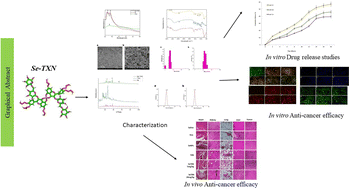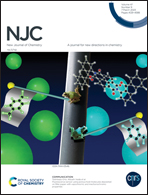The creation of selenium nanoparticles decorated with troxerutin and their ability to adapt to the tumour microenvironment have therapeutic implications for triple-negative breast cancer
Abstract
Despite advancements in treatment, managing aggressive types of breast cancer, particularly Triple Negative Breast Cancer (TNBC), remains a daunting task. Newer chemotherapeutics enhance the multidrug resistance in cancer cells, making them untreatable. The current research work was framed to develop a novel therapeutic target by utilizing the flavanol, troxerutin (TXN) as a drug of interest to target TNBC. And also, to increase the efficiency of the drug at the target site, a nanocarrier called selenium nanoparticles (SeNPs) has been exploited. Thus, the anticancer efficacy of TXN and Se–TXN against TNBC (in vitro and in vivo) has been compared and analysed in the present study. Se–TXN was synthesized by a precipitation approach and characterized by diverse analytical techniques, which confirmed the successful loading of TXN on the SeNPs. The inhibitory concentration (IC50) of Se–TXN was determined to be 6.5 ± 0.5 μg mL−1 according to the in vitro data. Even at lower concentrations, the existence of apoptotic bodies shows that Se–TXN is effective against TNBC. Additionally, the Se–TXN expression study shows that the activation of the caspase cascade pathway, which results in apoptosis, occurs from the downregulation of anti-apoptotic proteins and genes and the upregulation of pro-apoptotic proteins and genes. And the in vivo investigations like histopathology, hematology and biochemical parameters revealed that the Se–TXN had significantly lowered the tumour volume of treated Balb/C mice without having any significant systemic toxicity when compared to other treatment groups. Altogether, our data suggests the efficacy of Se–TXN nanoconjugates as an effective management therapy for treating TNBC.



 Please wait while we load your content...
Please wait while we load your content...